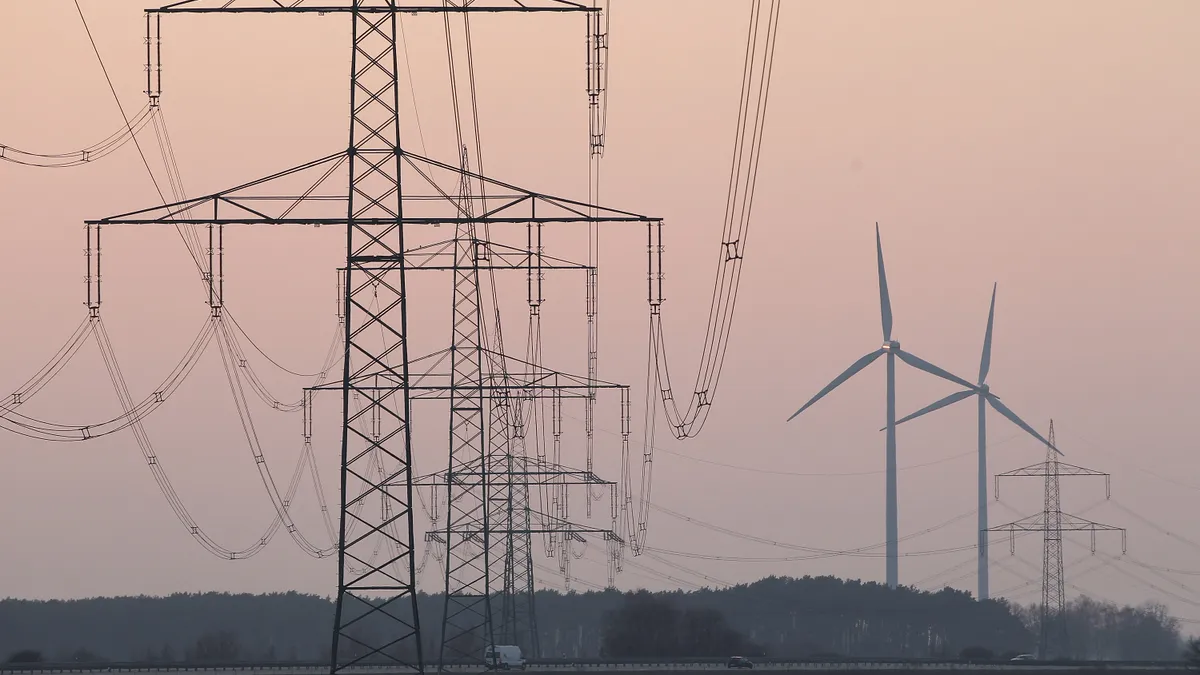Dive Brief:
-
Grid planners should identify "renewable energy zones" and plan transmission lines to reach those areas, utility officials and other panelists said Monday at a Federal Energy Regulatory Commission technical conference.
-
Planners should also consider multiple scenarios to develop long-range transmission plans that will would meet future needs, according to panelists at the conference.
-
"We should identify these areas early enough ... to avoid missing out on opportunities in generation development and proactively identifying optimal transmission for customers to save money," said Al Tamini, Sunflower Electric Power Corp. vice president of transmission planning, policy and compliance.
Dive Insight:
The conference on possible regional transmission planning reforms will feed into FERC's broader efforts to revise its transmission planning, cost allocation and interconnection rules.
FERC's initiative comes amid federal and state efforts to cut greenhouse gas emissions, partly by increasing emissions-free electricity on the power system and moving the transportation and building sectors away from fossil fuels towards electricity.
Studies show the shift will require large amounts of new transmission facilities to help keep the cost of the transition as low as possible. Building major power lines, however, can take a decade and often must overcome regulatory, legal and political hurdles.
Generally, panelists agreed that grid planners should identify renewable energy zones, designated as attractive regions for deploying solar and wind, and develop transmission plans to access those areas.
"We should forecast demand and generation, we should define geographic energy zones, and we should proactively plan and build transmission to these zones to save money," Debra Lew, Energy Systems Integration Group associate director, said.
Identifying potential renewable energy zones is the "easy part," according to National Renewable Energy Laboratory senior analyst David Hurlbut, who helped develop the Competitive Renewable Energy Zones in Texas.
The key part of delineating the most valuable zones is making sure renewable energy developers are interested in those areas, Hurlbut said.
Hurlbut called for getting regional transmission planners to work more closely together. "When you identify geographic zones, particularly for renewable energy, the more you can achieve economies of scale, the more savings you're going to procure, and the bigger pool of value you will have to address the cost allocations," Hurlbut said.
Another challenge is determining exactly who would benefit from the zones, a factor central to deciding who pays for them, according to Antoine Lucas, Southwest Power Pool vice president of engineering.
Looking at multiple scenarios, such as high rates of electrification or low natural gas prices, can help grid planners decide where and when to build power lines, according to panelists.
The Midcontinent Independent System Operator (MISO) has been using scenario planning since 2007, according to Aubrey Johnson, MISO executive director of system planning and competitive transmission.
"MISO is a big proponent of scenario planning and we think those are essential to working over a longer cycle," Johnson said.
However, in cases where grid planners use scenarios in the planning process, they are often inadequate, don't look out far enough or are inconsistent, according to several panelists.
"There are as many scenarios across the country as there are regions for balancing authorities, so there is a lot of inconsistency as to what assumptions are being utilized," Kamran Ali, American Electric Power vice president of transmission planning and analysis, said.
FERC should establish minimum standards for scenario planning, including on how to determine the benefits of transmission projects, according to Natalie McIntire, a consultant for the American Clean Power Association and the Clean Grid Alliance.
One of the challenges in scenario planning is figuring out the criteria for approving transmission plans based on the scenarios and how to change those plans if it appears they are becoming outdated, Kenneth Seiler, PJM Interconnection vice president for planning, said.
While acknowledging there is uncertainty in long-range planning, panelists generally agreed the plans should span at least 20 years and be developed every three years.
"The capital we invest [in transmission] is going to be more efficient if we're looking at it on a longer time base," Kamran said.
FERC Commissioner Mark Christie asked representatives from regional grid operators whether the agency should move quickly to change the rules around interconnecting generation projects to the grid. Christie has said it may make sense for FERC to move on the interconnection issue before tackling other transmission-related issues.
Generally, the representatives said their organizations were in various stages of revising their interconnection rules in an effort to improve the process and recommended FERC give them time to see if the changes are effective.















